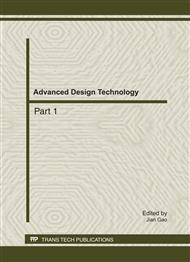p.894
p.899
p.908
p.914
p.918
p.923
p.928
p.933
p.937
Study on Q390 Steel High-Temperature Tensile Fracture Microstructure and Micro-Hardness
Abstract:
Q390 steel owns lots of good mechanical properties, it is used in many fields. By means of Gleeble 1500D thermal simulation machine, high temperature tensile tests were carried out; by OM,SEM, the fracture pattern and the microstructure of different distance from the fracture were watched and analyzed; by means of hardness test, the micro-hardness of different distance from the fracture was measured. The results show that the rupture at different temperature belongs to ductile rupture, with distance increasing from the fracture, the microstructure changes from composition structure of martensite, bainite, residual austenite into base metal structure, the grain size is smaller and smaller. The fracture hardness increases firstly and decreases secondly when tensile temperature increases, it is up to the max when temperature is 1200°C, the value is 395HV; the micro-hardness increases firstly and decreases secondly with distance increasing from the fracture, the hardness is the max when distance is 10mm,8mm,10mm at 800°C,1000°C,1200°C tensile temperature, the max value is respectively 330HV,340HV,370HV.
Info:
Periodical:
Pages:
918-922
Citation:
Online since:
August 2011
Authors:
Keywords:
Price:
Сopyright:
© 2011 Trans Tech Publications Ltd. All Rights Reserved
Share:
Citation:


